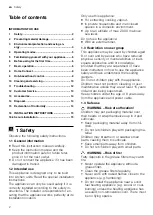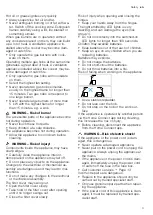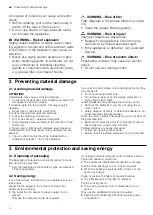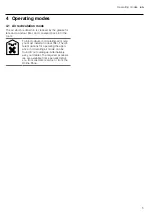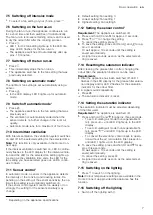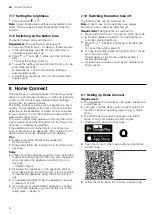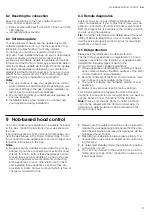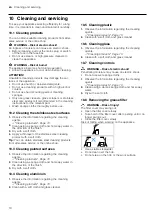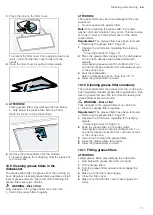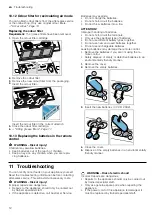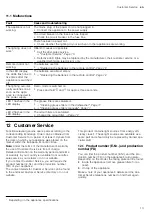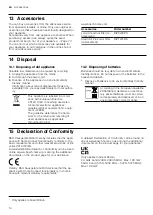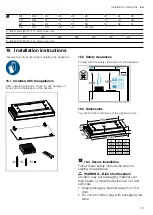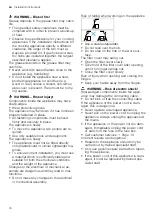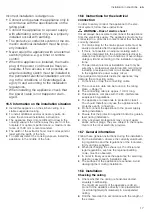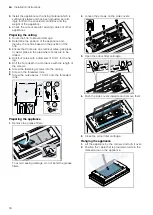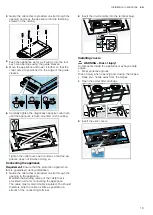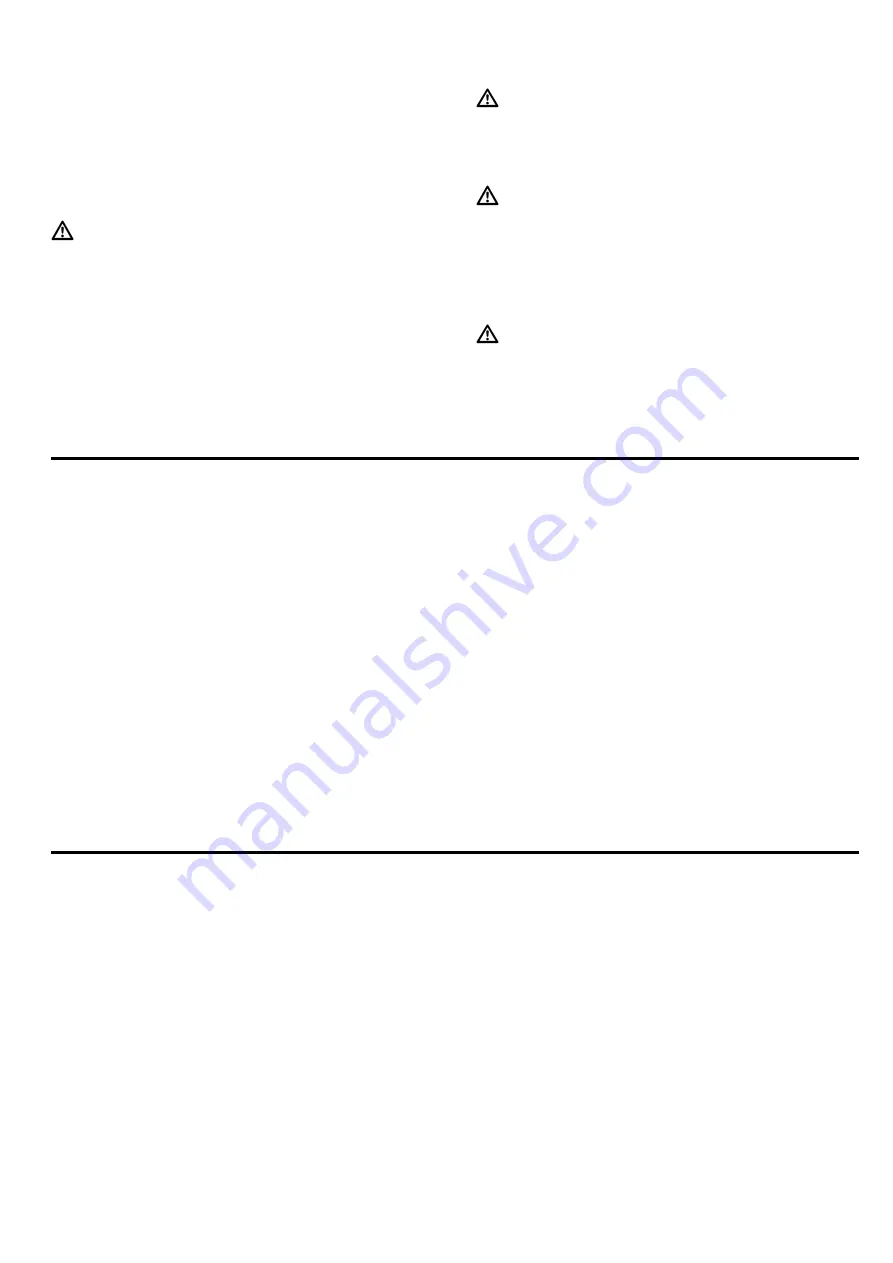
en
Preventing material damage
4
An ingress of moisture can cause an electric
shock.
▶
Before cleaning, pull out the mains plug or
switch off the fuse in the fuse box.
▶
Do not use steam- or high-pressure clean-
ers to clean the appliance.
WARNING ‒ Risk of explosion!
Highly caustic alkaline or highly acidic clean-
ing agents in conjunction with aluminium parts
in the interior of the appliance may cause ex-
plosions.
▶
Never use highly caustic alkaline or highly
acidic cleaning agents. In particular, do not
use commercial or industrial cleaning
agents in conjunction with aluminium parts,
e.g. grease filter on extractor hoods.
WARNING ‒ Risk of fire!
Fatty deposits in the grease filters may catch
fire.
▶
Clean the grease filters regularly.
WARNING ‒ Risk of injury!
Improper repairs are dangerous.
▶
Repairs to the appliance should only be
carried out by trained specialist staff.
▶
If the appliance is defective, call Customer
Service.
WARNING ‒ Risk of electric shock!
Penetrating moisture may cause an electric
shock.
▶
Do not use wet sponge cloths.
2 Preventing material damage
2.1 Avoiding material damage
ATTENTION!
Condensate may cause corrosion damage.
▶
To prevent condensation from building up, switch on
the appliance during cooking.
If moisture gets into the controls, this may result in
damage.
▶
Never clean controls with a wet cloth.
Incorrect cleaning damages the surfaces.
▶
Follow the cleaning instructions.
▶
Do not use harsh or abrasive detergents.
▶
Clean stainless steel surfaces in the direction of the
finish only.
▶
Never clean controls with stainless steel cleaners.
Condensation that flows back in may damage the ap-
pliance.
▶
The air extraction duct must be installed with a
gradient of at least 1° from the appliance.
If you put incorrect stress on the design elements, they
may break off.
▶
Do not pull design elements.
▶
Do not place objects on the design elements or
hang objects from them.
Leaking batteries may damage the remote control.
▶
Remove the batteries if you are not using the re-
mote control.
▶
Safely dispose of empty or defective batteries in an
environmentally friendly manner.
There is a risk of surface damage if you do not peel off
the protective film.
▶
Remove the protective film from all parts of the ap-
pliance before using for the first time.
Painted surfaces are easily damaged.
▶
Follow the cleaning instructions.
▶
Ensure that the painted surfaces are not scratched.
3 Environmental protection and saving energy
3.1 Disposing of packaging
The packaging materials are environmentally compat-
ible and can be recycled.
▶
Sort the individual components by type and dispose
of them separately.
3.2 Saving energy
If you follow these instructions, your appliance will use
less power.
Adjust the fan speed to the amount of steam pro-
duced during cooking.
¡
The lower the fan speed, the less energy is con-
sumed.
Only use the intensive mode as required.
If cooking produces large amounts of steam, select a
higher fan speed in good time.
¡
The odours are distributed around the room less.
Switch off the lighting if it is no longer required.
¡
When the lighting is switched off, it does not con-
sume any energy.
Clean or replace the filters at regular intervals.
¡
The effectiveness of the filter is retained.
Put the cooking lid on.
¡
The cooking vapours and condensation are re-
duced.
Only use the additional functions if required.
¡
Switching off additional functions reduces power
consumption.


